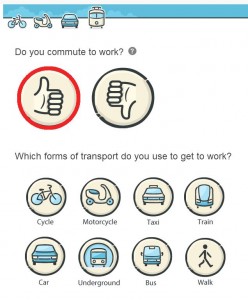Want to learn 14 tips to improve response rates? We’ll start with 1 – 7.
The higher the response rate, the better. But getting that high response rate can be difficult. Here are seven easy tips for improving your overall survey response rates.
Response Rate Tips 1 – 7
- Administer a pre-survey email. A pre-survey email can easily help warm up your respondent sample to the idea of completing your survey. Inform the sample of when they can expect to receive the survey, by what mode (online, mobile, paper, etc.), and explain the incentives (if applicable) and the benefits of the research to the respondent.
- Introduce yourself. Compose a well written introduction statement at the beginning of your survey detailing the importance of respondents’ opinions, comments, and overall feedback.
- Don’t use sales jargon. When administering an online survey, make sure that your email invitation does not contain text that is too focused on sales or may sound like it is promoting your business. Customers don’t want to feel like they’re participating in a survey that is too self-promoting. Instead, personalize the invitation and make it more attractive to participants.
- Keep it short. Survey dropouts are extremely common, especially when it comes to longer surveys. The shorter your survey is, the lower the likelihood that respondents will drop out, and the better response rate you’ll receive.
 Engage. Create a survey that is both attractive and engaging. The better the survey looks, the more appealing it will be to respondents, which increases the chances of it being completed. Respondents want to believe that they are participating in valuable research. If they are presented with a low-cost, sloppy survey, they may get the impression that the researcher is not serious about the research and choose to dropout.
Engage. Create a survey that is both attractive and engaging. The better the survey looks, the more appealing it will be to respondents, which increases the chances of it being completed. Respondents want to believe that they are participating in valuable research. If they are presented with a low-cost, sloppy survey, they may get the impression that the researcher is not serious about the research and choose to dropout.- Limit insignificant questions. Do you really need to know a respondent’s age, race, marital status, etc.? For certain research studies, that information is very important. If that information is not important to your overall goal, don’t ask it. Avoid asking personal questions and collecting private information if it is not necessary.
- Limit the amount of scrolling. For online surveys and mobile surveys in particular, survey dropout rates can be higher if respondents have to scroll up and down or back and forth to complete a survey. They also may inadvertently skip questions. Instead, break the survey up so that you fit as many questions as possible on a single, viewable page, without having to scroll. Whenever possible, use survey software that has auto adaptive capabilities, so a survey looks appropriate in any mode you choose to administer your survey (online, mobile, paper, kiosk, etc.).



